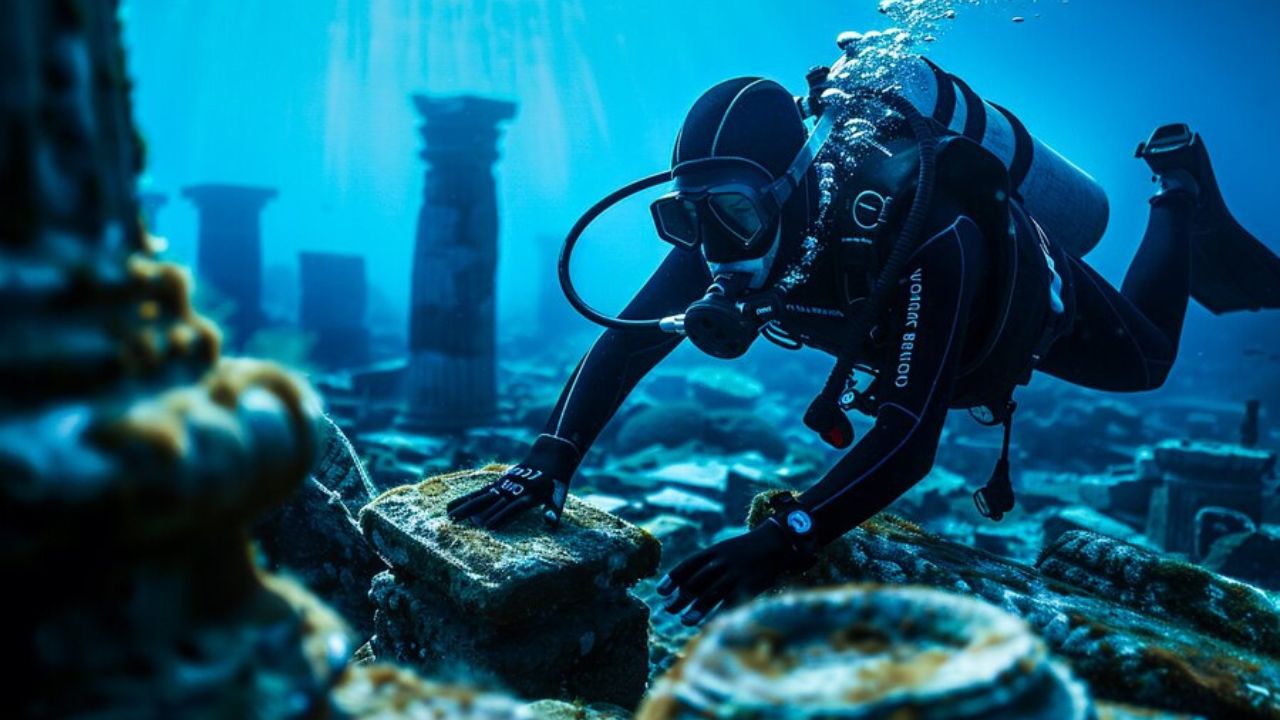The ocean, covering over 70% of our planet, remains one of the last frontiers waiting to be explored. Beneath its shimmering surface lies a world teeming with mysteries yet to be uncovered. Enter Neptunic—an innovative force poised to transform how we interact with this vast aquatic realm. With cutting-edge technology designed specifically for underwater exploration, Neptunic is not just another tool; it’s a game-changer that promises to enhance our understanding and preservation of marine ecosystems.
Imagine navigating deep-sea trenches or surveying coral reefs with unprecedented clarity and efficiency. That’s the vision behind Neptunic. As we delve into its purpose and potential, prepare to discover how this groundbreaking technology is setting sail toward a future where the ocean’s secrets are no longer hidden but celebrated and protected.
The History of Ocean Exploration Technology
Ocean exploration technology has come a long way since the earliest days of seafaring. Ancient civilizations used simple vessels for fishing and trade, relying on the stars to navigate.
The invention of the compass in the 12th century marked a significant leap forward, allowing sailors to venture further into uncharted waters.
In the 20th century, advancements like sonar and submersibles opened new doors. Researchers could now map ocean floors and study marine life in ways previously unimaginable.
The race to explore deep-sea environments intensified with missions like Jacques Cousteau’s underwater expeditions. His innovations brought marine exploration into public consciousness.
As technology continued evolving, remotely operated vehicles (ROVs) emerged, enabling scientists to explore depths that were once inaccessible. This set the stage for more advanced systems we see today, laying groundwork for groundbreaking projects like Neptunic.
Current Limitations in Ocean Exploration
Ocean exploration has come a long way, yet it still faces significant challenges. One major limitation is the depth of the oceans. Many areas remain inaccessible due to extreme pressure and darkness.
Another hurdle is the technology used for data collection. Current underwater vehicles often lack precision in mapping and detecting marine life. This leads to gaps in our understanding of ocean ecosystems.
Funding poses another constraint. Ocean research programs frequently struggle with limited budgets, hindering advancement and innovation.
Communication also presents issues when exploring remote regions deep underwater. Signals can be weak or entirely lost, complicating real-time data transmission.
These limitations create barriers that prevent us from fully grasping the mysteries beneath the waves. The need for innovative solutions has never been more urgent as we seek to unlock the secrets of our oceans.
How Neptunic is Revolutionizing the Industry
Neptunic is changing the game in ocean exploration. Its cutting-edge technology pushes boundaries that were once thought unreachable.
With advanced sensors and AI integration, Neptunic allows for real-time data collection. This means scientists can make informed decisions while exploring uncharted territories beneath the waves.
The design of Neptunic vehicles focuses on versatility and durability. They can withstand extreme conditions, enabling deeper dives than ever before.
Collaboration with marine researchers enhances knowledge sharing across disciplines. The result? A more comprehensive understanding of ocean health and biodiversity.
Moreover, user-friendly interfaces simplify operations for explorers at all levels. This democratizes access to sophisticated technology previously reserved for experts or large institutions.
Neptunic’s commitment to innovation not only boosts efficiency but also engages a wider audience in ocean conservation efforts. It fosters a sense of responsibility towards our oceans among users and observers alike.
Advancements in Underwater Vehicles and Equipment
Recent innovations in underwater vehicles are reshaping how we explore the ocean depths. These advancements are not merely incremental; they represent a leap forward in technology and capability.
Autonomous Underwater Vehicles (AUVs) now feature sophisticated navigation systems, enabling them to travel deeper and more accurately than ever before. Equipped with advanced sensors, these AUVs can collect invaluable data on marine life and underwater ecosystems.
Additionally, remotely operated vehicles (ROVs) have seen remarkable improvements. Enhanced durability allows them to operate under extreme conditions while capturing high-definition video footage for research purposes.
Emerging materials also play a crucial role in this transformation. Lightweight yet robust composites make vehicles more efficient and easier to maneuver through challenging environments.
With Neptunic leading the charge, the future promises even greater sophistication, opening new avenues for discovery beneath the waves.
Environmental Impact and Sustainability Efforts
Neptunic is designed with environmental stewardship at its core. The technology emphasizes minimal disturbance to marine ecosystems during exploration. This approach ensures that sensitive habitats remain intact while researchers gather crucial data.
Sustainability efforts are woven throughout Neptunic’s operations. From energy-efficient designs to the use of eco-friendly materials, every aspect reflects a commitment to preserving ocean health.
Moreover, Neptunic collaborates with conservation organizations, fostering partnerships that aim to protect endangered species and restore damaged environments. These alliances enable shared knowledge and resources for effective marine management.
By focusing on sustainability, Neptunic not only enhances research capabilities but also promotes awareness of pressing oceanic issues. The future of ocean exploration demands harmony between innovation and ecological responsibility, making these initiatives essential in guiding responsible practices across the industry.
Potential Applications for Neptunic Technology
Neptunic technology opens the door to a myriad of applications across various fields. One promising area is marine research, where its advanced sensors can gather data on ocean currents and temperature changes, helping scientists understand climate impacts.
In exploration, Neptunic can assist in locating shipwrecks or underwater archaeological sites with unparalleled precision. Its capabilities could redefine treasure hunting and historical preservation.
Environmental monitoring is another vital application. By tracking pollution levels and biodiversity in real-time, Neptunic enables quicker responses to ecological threats.
Fisheries management stands to benefit as well. With accurate assessments of fish populations, sustainable practices can be implemented more effectively.
Moreover, search-and-rescue missions will become safer and more efficient using Neptunic’s robust technology for locating missing vessels or individuals at sea. Each potential use showcases how this innovation could transform industries reliant on oceanic resources.
The Future of Ocean Exploration with Neptunic
Neptunic is poised to transform the way we explore our oceans. With cutting-edge technology, it promises to unlock secrets hidden beneath the waves.
Advanced sensors and AI integration allow for real-time data collection. This means researchers can gather insights faster than ever before. Imagine mapping underwater terrains with unprecedented accuracy!
Collaboration will be key in this new era of exploration. Neptunic encourages partnerships between scientists, governments, and private sectors. Sharing resources can expand knowledge and capabilities beyond current limits.
Moreover, its commitment to sustainable practices ensures that ocean ecosystems remain protected during explorations. Balancing discovery with preservation sets a positive precedent for future missions.
With Neptunic leading the charge, the potential for breakthroughs in marine biology, geology, and climate science is immense. The mysteries of deep-sea environments are finally within reach as we embark on this exciting journey together.
The Exciting Possibilities of Neptunic Unveiled
Neptunic opens the door to a new era in ocean exploration. Imagine exploring the depths of the Pacific with unprecedented precision and safety. This technology fosters an environment where researchers can gather data faster than ever.
The potential for scientific discovery is staggering. Marine biologists could monitor ecosystems continuously, leading to breakthroughs in conservation efforts.
Additionally, commercial industries may benefit greatly from Neptunic’s capabilities. Oil and gas companies can now conduct safer underwater operations while minimizing environmental risks.
Innovations like real-time communication systems will enhance collaboration among scientists worldwide. The seamless sharing of findings could propel marine research into uncharted territories.
With each dive, Neptunic promises to reveal secrets hidden beneath waves for centuries, forever changing our understanding of oceanic life and resources.
Conclusion :
Neptunic represents a significant leap forward in ocean exploration technology. Its innovative designs and advanced capabilities promise to reshape how we interact with the marine environment.
With each new development, Neptunic opens doors to uncharted territories beneath the waves. These advancements foster a deeper understanding of our oceans and their ecosystems.
The potential applications extend far beyond mere exploration. They encompass environmental monitoring, resource management, and even educational opportunities for future generations.
As interest in ocean conservation grows, solutions like those offered by Neptunic become increasingly vital. The fusion of technology and sustainability sets a promising path toward protecting our planet’s most precious resources.
Anticipation surrounds what comes next as researchers and explorers harness the power of Neptunic. This is just the beginning of an exciting journey into the depths of our world’s oceans, revealing wonders that await discovery.
FAQ’s
As Neptunic continues to evolve, it raises a multitude of questions about its impact and potential applications. Here are some frequently asked questions that shed light on this innovative technology:
What is Neptunic?
Neptunic refers to a cutting-edge ocean exploration technology designed to enhance our ability to explore the depths of the ocean efficiently and sustainably.
How does Neptunic address current limitations in ocean exploration?
Neptunic overcomes existing challenges by incorporating advanced materials and designs into underwater vehicles. This enables deeper dives, longer missions, and reduced environmental impact.
What advancements can we expect from Neptunic’s technology?
Expect significant improvements in sensor capabilities, energy efficiency, and data collection methods. These advancements will provide richer insights into marine ecosystems.
Are there sustainability initiatives tied to Neptunic’s development?
Yes! Sustainability is at the forefront of Neptunic’s mission. The focus is on minimizing ecological disruption while maximizing research opportunities.
What industries could benefit from Neptunic technology?
Multiple sectors stand to gain—from scientific research institutions studying climate change impacts to tourism ventures looking for unique underwater experiences.
How might researchers use data gathered by Neptunic technologies?
Researchers can leverage detailed mapping of sea floors or monitoring marine life behavior patterns, leading to more informed conservation efforts.
Is there potential for collaboration with other entities using Neptunic tech?
Absolutely! Collaborative efforts between governments, universities, NGOs, and private firms could amplify discoveries made possible through this innovative approach.
With such exciting possibilities ahead for marine science and conservation powered by innovations like those found within the realm of nept unic technologies—it’s clear that exploring our oceans has never been more promising.

